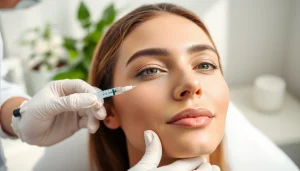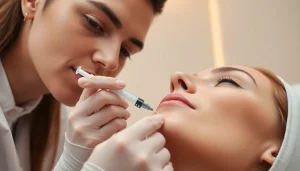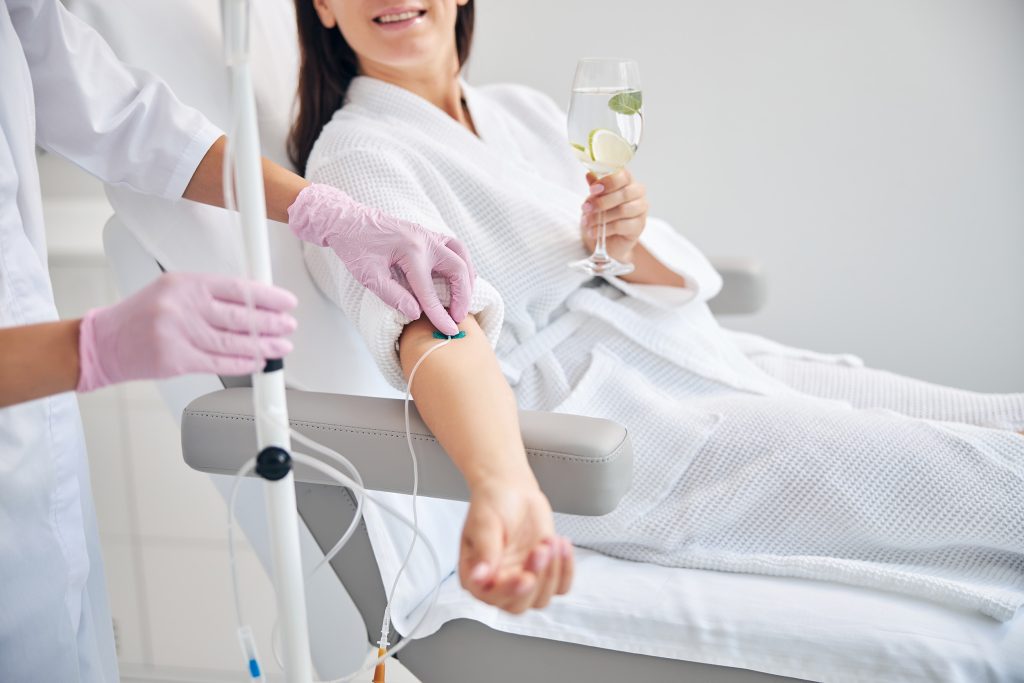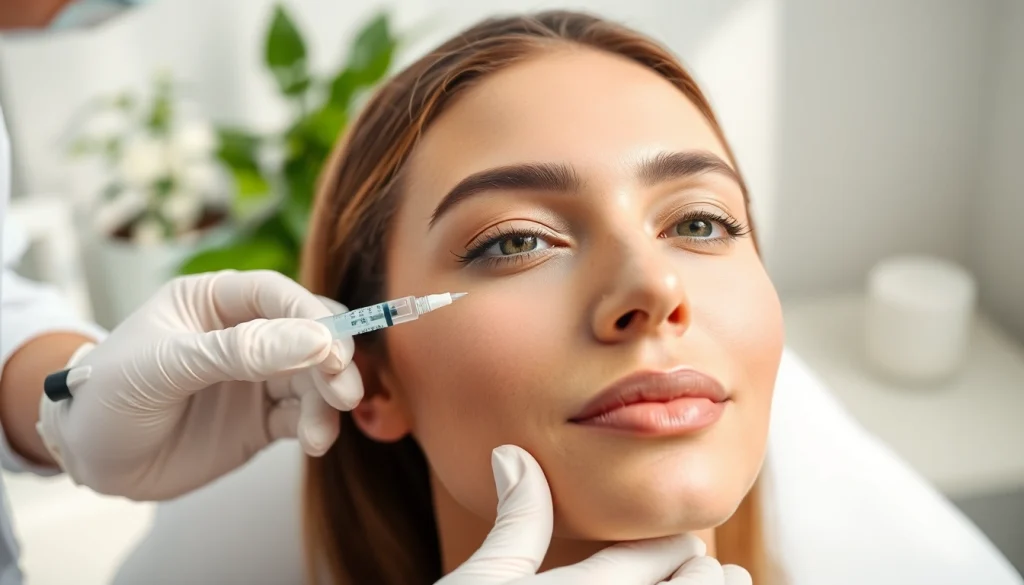Understanding BHRT: The Basics
Bioidentical hormone replacement therapy (BHRT) has gained significant attention for its potential to alleviate symptoms associated with hormonal imbalances in both men and women. As hormones play a pivotal role in regulating various bodily functions, any disruption can lead to a range of issues. This therapy utilizes hormones that are chemically identical to those naturally produced by the body, providing a tailored approach to hormone replacement. It is crucial for individuals seeking insights about BHRT to understand its definition, applications, benefits, and associated risks.
For those considering implementation of bhrt in their health regimen, understanding the fundamentals is the first step toward making informed choices.
What is Bioidentical Hormone Replacement Therapy?
Bioidentical hormones are synthesized in laboratories and are designed to replicate the structure and function of hormones produced by the human body. Unlike synthetic hormones, which can differ in molecular structure, bioidentical hormones ensure close compatibility with body receptors, theoretically leading to fewer side effects and more effective results. Common forms of BHRT include creams, gels, patches, pills, and injectable therapies.
Common Conditions Treated by BHRT
BHRT is often sought to manage various conditions stemming from hormonal imbalances, such as:
- Menopause: Women experiencing menopause may seek BHRT to alleviate symptoms such as hot flashes, mood swings, and sleep disturbances.
- Andropause: Men might turn to BHRT when facing symptoms like fatigue, depression, and declining libido, commonly associated with decreasing testosterone levels.
- Thyroid Disorders: People with underactive thyroids may benefit from bioidentical hormone treatments to restore optimal hormone levels.
- PMS (Premenstrual Syndrome): Women experiencing severe PMS may find relief through hormonal balancing.
How Does BHRT Work?
BHRT works by replacing hormones that are either deficient or out of balance in the body. After a thorough hormonal assessment, healthcare professionals customize a treatment plan, which can include various methods of delivery depending on the patient’s specific needs and preferences. The goal is to restore hormonal equilibrium and alleviate related symptoms, thus improving quality of life.
Benefits of BHRT
Improving Quality of Life with BHRT
One of the primary motivations for individuals undergoing BHRT is the potential for significantly enhanced quality of life. Many users report a resurgence in energy levels, improved mood and emotional well-being, and better overall health. Symptoms like fatigue, anxiety, and low libido may diminish, allowing individuals to engage more actively in day-to-day activities.
Supporting Women’s Hormonal Health
For women, BHRT can provide effective relief from menopausal symptoms. Clinical studies have demonstrated that women using bioidentical hormones often experience fewer side effects than those using traditional hormone replacement therapy. Benefits reported include:
- Reduction in hot flashes and night sweats.
- Improved mood stability and decreased anxiety levels.
- Enhanced sexual satisfaction and libido.
- Better sleep quality and reduced insomnia.
Enhancing Men’s Wellbeing Through Hormonal Balance
Men experiencing imbalances in testosterone see numerous benefits from BHRT. Restoring testosterone levels can enhance mood, increase energy, and improve sexual function. These changes often contribute to a broader sense of health and vitality. Additionally, men undergoing BHRT report improved muscle mass and reduced body fat, which is crucial as aging often leads to a decrease in muscle and an increase in adipose tissue.
Safety and Risks Associated with BHRT
Potential Side Effects of BHRT
As with any medical treatment, understanding potential side effects is vital. While many patients tolerate BHRT well, some may experience:
- Weight gain or fluctuations in weight.
- Increased acne or skin reactions.
- Breast tenderness and changes in menstrual patterns for women.
- Possible mood swings or irritability.
Who Should Avoid Bioidentical Hormones?
BHRT may not be suitable for everyone. Potential contraindications include individuals with:
- History of hormone-sensitive cancers (like breast or prostate cancer).
- Active liver disease.
- Uncontrolled hypertension or cardiovascular disease.
- Serious underlying health conditions that may further complicate hormone therapy.
Consultation: What to Discuss with Your Healthcare Provider
Before embarking on a BHRT program, patients should engage in thorough discussions with their healthcare providers. Essential aspects to address include:
- Your complete medical history, including family history of hormone-related issues.
- Current symptoms you’re experiencing and their impact on daily life.
- Testing for hormone levels and other relevant diagnostics.
- Potential benefits and risks specifically tailored to your health status.
Getting Started with BHRT
Finding a Qualified Provider for BHRT
Choosing the right provider is crucial for a successful BHRT experience. It’s important to select a healthcare professional specializing in hormone therapy with experience, credentials, and positive patient feedback. Don’t hesitate to ask questions about their approach to BHRT, laboratory testing protocols, and how treatment plans are customized.
Initial Testing and Diagnosis for Hormonal Imbalances
A comprehensive evaluation is often initiated with detailed blood work or saliva tests to assess current hormone levels. This diagnostic phase is critical, as it informs the healthcare provider about specific deficiencies to address. In addition to hormone testing, it’s common to perform base health assessments to gauge overall health status, including lifestyle factors, stress levels, and diet.
Understanding Your Treatment Options: Pills, Creams, and More
Once hormonal deficiencies are identified, treatment can begin. Patients have various delivery methods to consider, such as:
- Pills: Oral tablets can be an effective delivery method, allowing for convenience and ease of use.
- Creams and Gels: These topical options are absorbed through the skin and can provide localized or systemic effects depending on the formulation and application site.
- Patches: Transdermal patches offer a steady release of hormones over time and can reduce fluctuations seen in oral dosing.
- Injections: Some patients may require injections for immediate or higher potency effects, particularly for testosterone therapy in men.
Monitoring and Adjusting Your BHRT Treatment
How to Track Your Progress on BHRT
Monitoring progress while on BHRT is crucial to ensuring its effectiveness. Patients should keep track of symptoms, holistic changes in energy and mood, and any side effects. Regular check-in appointments allow healthcare providers to adjust dosages, alter delivery methods, or re-evaluate hormone imbalances based on individual responses. Keeping a symptom journal can help document improvements or side effects over time.
When to Reassess Your BHRT Protocol
Reassessing your treatment protocol is an important aspect of BHRT management. It’s generally recommended to schedule a reassessment at least yearly or sooner if any drastic changes occur in symptoms. Adjustments to your hormone therapy may arise from:
- Changes in lifestyle or health status.
- New symptoms indicating further imbalances.
- Shifts in personal wellness goals, such as weight management or stress reduction strategies.
Integrating Lifestyle Changes for Maximum Benefits
While BHRT can provide substantial benefits for hormonal balance, integrating lifestyle changes can enhance outcomes. Consider adopting:
- Regular Exercise: Exercise helps regulate hormonal balance and improve mood while reducing stress.
- Balanced Nutrition: Eating a diet rich in whole foods, healthy fats, and lean proteins can play a critical role in hormone production.
- Stress Management Techniques: Mindfulness, yoga, and meditation can greatly assist in maintaining hormonal balance by minimizing stress-related hormonal fluctuations.








